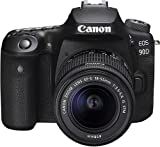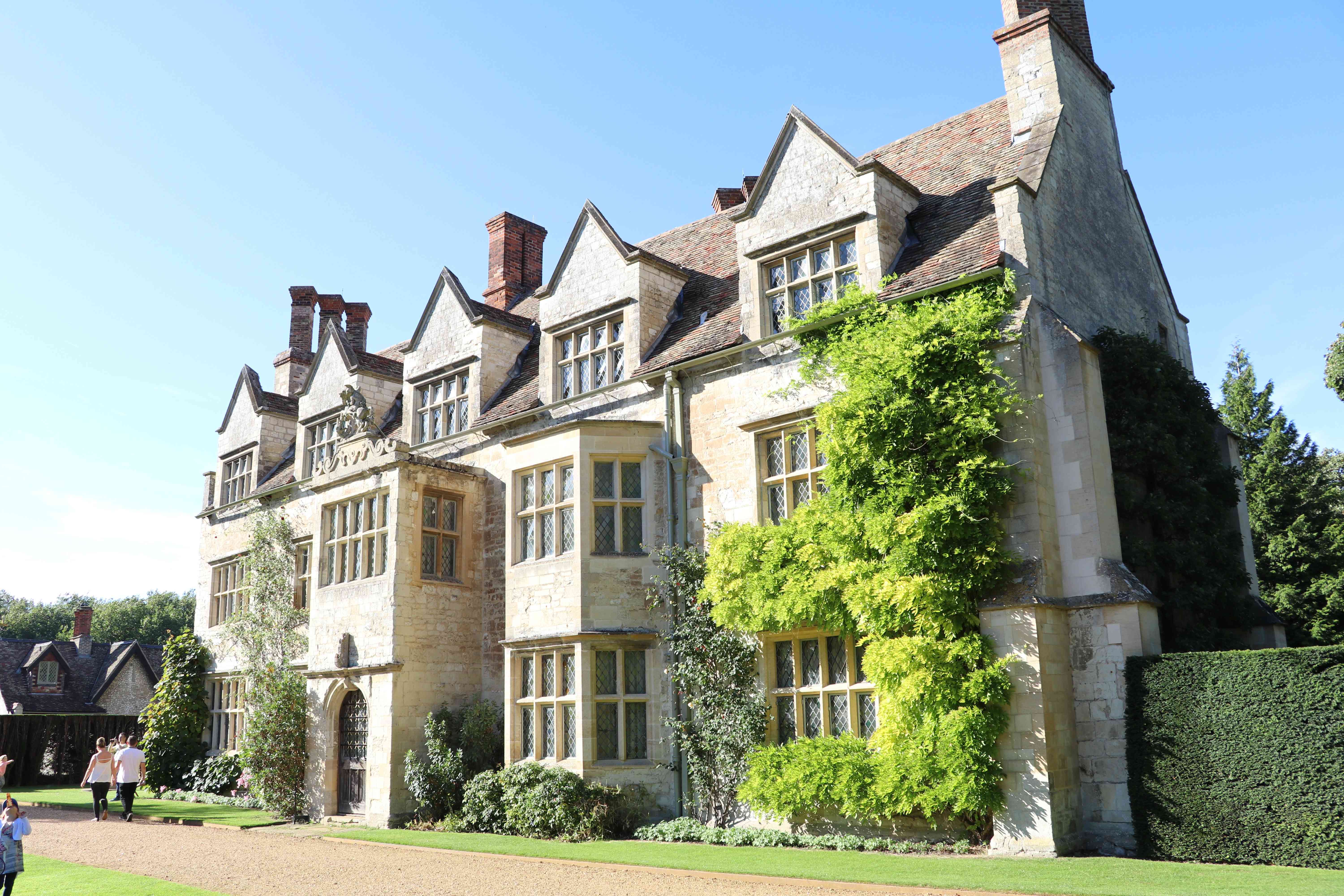Having first launched in early 2016, the Canon 80D is now pushing four years old. At the time of writing this update, it's still available to buy new with an 18-55mm zoom lens for £950 . That's a few hundred pounds lower than its launch price, but it's since been superseded by the EOS 90D, which offers improved battery life, 4K video recording and has an all-new 32.5-megapixel sensor, among other benefits. If you can afford to pay another £300, we'd recommend buying the newer model since it represents a substantial upgrade. Otherwise, though, the EOS 80D remains a dependable all-rounder and a solid option for amateurs.


Original review continues below:
The EOS 80D is the latest model in Canon’s enthusiast line of cameras. It’s a step up from the consumer-oriented EOS 750D and 760D , with a bigger viewfinder, more physical controls, a weather sealed body, longer battery life, faster performance and more sophisticated autofocus. It isn't as feature-packed, or as expensive, as Canon’s top-of-the-range cropped-sensor SLR, the 7D Mark II . However, unless you’re shooting sports or wildlife you probably don’t need the 7D Mark II’s 10fps burst speed and 65-point autofocus. The 80D is designed for photography enthusiasts who want something capable and dependable while leaving enough in the budget for some decent lenses.
Improvements over its predecessor, the Canon EOS 70D , are mostly on the inside. The main imaging sensor is up from 20 to 24 megapixels. The autofocus sensor has been upgraded from 19 to 45 points, all of which are cross-type for increased sensitivity. Exposure metering is more sophisticated, with a 7,560-pixel full-colour sensor replacing the 70D’s 63-zone sensor. The camera's 1080p video capture is now at frame rates of up to 60fps and there’s a headphone socket for monitoring soundtracks.
READ NEXT: The best cameras to buy
From the outside, it’s virtually indistinguishable from the 70D, but that’s no bad thing. The generous allocation of buttons give quick access to ISO speed, metering, drive mode and autofocus functions, and the Set button can be assigned to white balance. An AF-On button means autofocus and shutter release can be controlled independently, avoiding unnecessary refocusing.
The 3in articulated touchscreen speeds up menu navigation and makes light work of moving the autofocus point in live view mode. However, the 80D hasn’t inherited the 750D’s ability to move the autofocus point via the touchscreen while composing shots on the viewfinder — a slightly counter-intuitive feature but one that I find much quicker than pressing the four-way pad.
It’s not the only time when I found the controls a little disappointing. The passive LCD screen on the top of the camera is welcome but I’d have liked changes to drive, metering and autofocus modes to be shown through the viewfinder, too. To be fair, the Nikon D7200 has the same limitation. You’d have to spend more and opt for the Canon EOS 7D Mk II to see more information through the viewfinder.
The move from 19 to 45 autofocus points bodes well for subject tracking, but Canon hasn’t included its Intelligent Tracking and Recognition system here. I had to root around in the Custom Function menus to get tracking autofocus working. Having done so, I wasn’t bowled over by its effectiveness. This is an area where Nikon SLRs often take the lead, and the D7200 is way ahead of the EOS 80D in this respect.
As with the EOS 70D, the 80D’s sensor uses a technology called Dual Pixel Autofocus to improve autofocus times in live view mode. It worked well on the 70D but, for reasons that weren’t entirely obvious, the 70D’s live view mode still took over two seconds between shots.
The 80D has got this down to 1.1 seconds, which is still pretty slow compared to the 0.3 seconds it takes when using the viewfinder, but a big improvement nonetheless. Burst shooting with continuous autofocus is now available in live view mode, at a respectable 5fps. Switching to the viewfinder, it was just shy of its 7fps published speed. It kept going until the card was full of JPEGs, and lasted for 20 RAW frames before slowing. These are strong results that should satisfy all but the most demanding action photographers.
Canon EOS 80D review: Video
Canon’s Dual Pixel Autofocus system comes into its own for video capture. Critically, video autofocus was decisive and reliable, with barely any of the focus hunting that can completely spoil footage. This puts Canon way ahead of Nikon for video work where autofocus will be used the most.
Face detection did a great job of keeping people in focus, and the left and right buttons can be used to jump between detected faces. Subject tracking is available too, but bizarrely, there’s no option simply to tap on the subject you want to track. You can push a button to instigate tracking but the camera decides what it wants to track.
The new headphone socket makes the mic socket much more useful, as you can hear what you’re recording and be confident your external microphone is working properly. It’s also great to see that the iOS and Android apps support video as well as stills capture, allowing a tablet to act as a wireless monitor while shooting. On the 70D, enabling Wi-Fi disabled the video mode.
There are three video compression settings, with the highest using an All-Intra algorithm that describes every frame from scratch rather than as an update to the previous one. The resulting files are enormous but it virtually eliminates any sign of compression artefacts. Newfound support for frame rates up to 60fps is welcome, although the All-Intra mode isn’t available at this rate. I’d much rather have 4K video capture. As with the 70D, details in the 80D’s 1080p videos aren’t quite as crisp as from Nikon’s SLRs or Panasonic’s mirrorless cameras, and can’t begin to compete with 4K footage.
Canon EOS 80D: Image quality
SLRs’ image quality rarely gives me much cause for complaint, but while the 80D’s output is mostly excellent, there is some room for improvement. The most frequent problem I encountered was over-exposed JPEGs on automatic settings. The new 7,560-pixel metering sensor means the 80D is better equipped to identify specific areas of light and dark in the scene but in high-contrast scenes, the camera seemed to be more concerned about maintaining detail in shadows than in highlights. The result was that brighter parts of scenes were often clipped. It’s always possible to allow for this using exposure compensation but I’d prefer not to have to worry about it.
The 80D picked sensible shutter speeds to avoid camera shake, with faster speeds and longer focal lengths, but it didn’t make allowances for moving subjects, as some camera brands do. More experienced photographers might be happy to switch to shutter priority mode and manage motion blur manually, but again, I’d prefer that the 80D had the option to look after this automatically.
Autofocus was less than entirely reliable, too. A few of my test shots were very slightly soft, and a smaller number showed clear evidence of misjudged focus. No autofocus system is entirely reliable but the 80D fell slightly short of expectations. Meanwhile, the increase from 20 to 24 megapixels served mostly to reveal the limitations of the 18-135mm lens I was sent for testing.
Noise levels at fast ISO speeds told a similar story. There’s not much to separate the latest generation of APS-C sensors for noise, but the 80D couldn’t quite match the Nikon D7200, both for JPEGs and for unprocessed RAW output. The overall impression is of an SLR that is unlikely to disappoint for image quality but which doesn’t pull anything special out of the bag.
Canon EOS 80D review: Camera samples

^ There’s lots of detail in this shot but the sunlit front of the house is a little over-exposed. (1/125s, f/7.1, ISO 100, 29mm equivalent)
^ The exposure level is better here but there are still a few over-exposed highlights. Edge detail from the 18-135mm lens (available as a kit lens for the 80D) is disappointing. (1/100s, f/7.1, ISO 100, 38mm equivalent)
^ The camera has picked out lots of subtle detail in this shot, but I had to dial in -1 EV of exposure compensation to avoid blowing out the highlights. (1/100s, f/6.3, ISO 100, -1 EV, 30mm equivalent)
^ This is a more successful automatic exposure, and focus (on the girl on the left) is spot on. (1/200s, f/7.1, ISO 100, 125mm equivalent)
^ The sharpest part of this frame is the foreground at the bottom of the frame, despite selecting an autofocus point towards the centre. (1/30s, f/3.5, ISO 200, 29mm equivalent)
^ Details in this shot are dense and crisp, although the details on the fir tree towards the right look slightly smeared. (1/60s, f/5, ISO 100, 35mm equivalent)
^ No concerns here: a balanced exposure level, natural skin tones and sharp focus. (1/100s, f/100, ISO 125, 107mm equivalent)
^ Shooting a shady scene at a longer focal length has pushed the ISO speed up to 1600. There’s not much evidence of noise but the highlights are overexposed once again. (1/160s, f/5.6, ISO 1600, 154mm equivalent)
^ ISO 4000 means a fair amount of noise but it’s not too oppressive. (1/200s, f/5.6, ISO 4000, 216mm equivalent)
^ Compared with the Nikon D7200 at ISO 12800, the EOS 80D’s unprocessed RAW output (top) shows more noise and its JPEGs are slightly grainier too. (1/1250s, f/8, ISO 12800, 56mm equivalent)
Canon EOS 80D review: Verdict
The Canon EOS 70D earned itself a five-star review at Expert Reviews, not because of any specific stand-out feature but for its elegance and competency across the board. The 80D has echoes of the same traits, but nearly four years later and with the 70D still just about available for around £650, the 80D is left looking slightly run-of-the-mill. Meanwhile, the Nikon D7200 is currently available for £780 body only and beats the 80D for autofocus performance and controls. It has the edge for image quality, too.
The 80D comfortably outperforms the D7200 for video autofocus, but the lack of 4K recording is a serious drawback. Keen videographers considering spending this much on a new camera are likely to want 4K — and rightly so, given the jump in quality, even when exporting edited projects at 1080p. Admittedly, Nikon isn’t much better, with 4K only available in the £1,650 Nikon D500 and £1,300 Nikon D7500, but if you’re willing to take the mirrorless route you’re spoiled for choice with any number of decent options.
Still, the Canon EOS 80D’s pedigree does count in its favour. As with the EOS 70D, this is a dependable all-rounder and, when the 70D disappears entirely, it’ll be the right Canon SLR for amateur enthusiasts.
|
Canon EOS 80D specifications |
|
Sensor resolution |
24 megapixels |
|
Sensor size |
22.3x14.9mm |
|
Focal length multiplier |
1.6x |
|
Optical stabilisation |
Available in lenses |
|
Viewfinder |
Optical TTL |
|
Viewfinder magnification (35mm-equivalent), coverage |
0.59x, 100% |
|
LCD screen |
3in (1,040,000 dots) |
|
Articulated |
Yes |
|
Touchscreen |
Yes |
|
Orientation sensor |
Yes |
|
Photo file formats |
JPEG, RAW (CR2) |
|
Maximum photo resolution |
6,000x4,000 |
|
Photo aspect ratios |
4:3, 3:2, 16:9, 1:1 |
|
Video compression format |
MP4 (AVC) at up to 90Mbit/s |
|
Video resolutions |
1080p at 24/25/30/50/60fps, 720p at 25/30/50/60fps |
|
Slow motion video modes |
N/A |
|
Maximum video clip length (at highest quality) |
29m 59s |
|
Controls |
|
Exposure modes |
Program, shutter priority, aperture priority, manual |
|
Shutter speed range |
30 to 1/8,000 seconds |
|
ISO speed range |
100 to 16000 |
|
Exposure compensation |
EV +/-5 |
|
White balance |
Auto, 6 presets with fine tuning, manual, Kelvin |
|
Auto-focus modes |
45-point: single, zone, multi. Live view: flexible spot, multi, tracking with face detection |
|
Metering modes |
Multi, partial, spot, centre-weighted average |
|
Flash modes |
Auto, forced, suppressed, slow synchro, rear curtain |
|
Drive modes |
Single, continuous, self-timer, AE bracket, WB bracket, HDR |
|
Physical |
|
Lens mount |
Canon EF |
|
Card slot |
SDXC |
|
Memory supplied |
None |
|
Battery type |
Li-ion |
|
Connectivity |
USB, mini HDMI, wired remote, 3.5mm microphone, 3.5mm headphone |
|
Wireless |
Wi-Fi, NFC |
|
GPS |
Optional GP-E2 unit |
|
Hotshoe |
Canon E-TTL |
|
Body material |
Polycarbonate |
|
Accessories |
USB cable, neck strap |
|
Weight |
730g |
|
Dimensions (HxWxD) |
105x139x79mm |
Canon EOS 80D specifications











